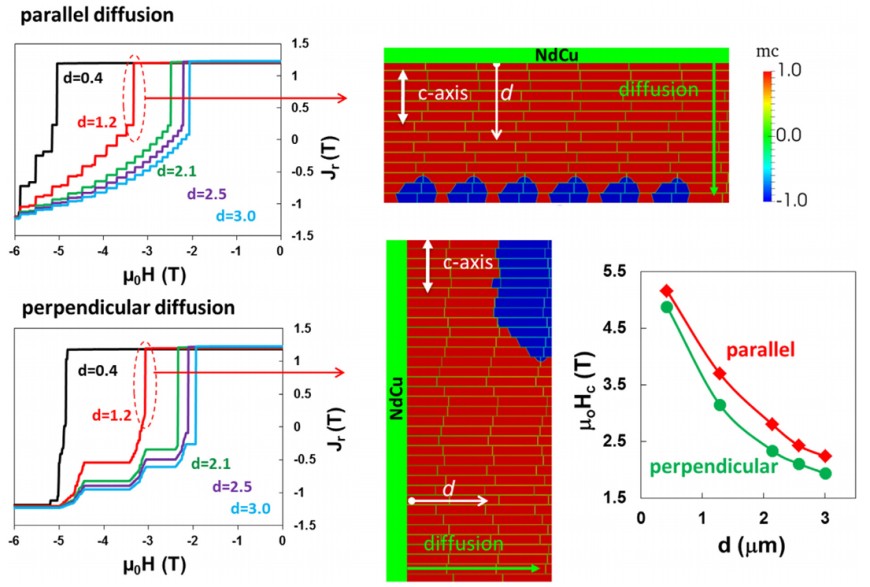Anisotropic local hardening in hot-deformed Nd-Fe-B permanent magnets
New Publication in “Acta Materialia”
2018/03/06

Authors: Simon Sawatzki, Thorsten Schneider, Min Yi, Enrico Bruder, Semih Ener, Mario Schonfeldt, Konrad Güth, Bai-Xiang Xu and Oliver Gutfleisch
The diffusion of low-melting Nd-Cu alloys is very effective to increase coercivity Hc in hot-deformed NdFe-B permanent magnets without the use of heavy rare earth and to study the local hardening mechanism, especially the role of the Nd-rich grain boundary on the magnetic decoupling of the Nd-Fe-B grains on the nanoscale. In this study, we found that for a Nd-Cu diffusion parallel to the texture axis the increase in Hc is higher than for a diffusion perpendicular to it and strongly depends on the diffusion depth whereas remanence develops in an inverse manner. We note the following three observations to explain This behavior results from: a) a higher overall Nd and Cu concentration for the parallel diffusion revealed by global energy dispersive X-ray (EDX) maps leading to a distinct change in the broadness of the interaction domains visualized by Kerr microscopy, b) a higher degree of misalignment of the Nd2Fe14B grains observed by electron backscattered diffraction (EBSD), and c) a more effective local hardening on the macroscopic scale governed by dipolar and exchange interactions as modeled by micromagnetic simulations. The misalignment and the incorporation of Nd and Cu also lead to a volume expansion of the magnet of around 0.6~0.8% as proven by in-situ thermo-optical measurements (TOM).



